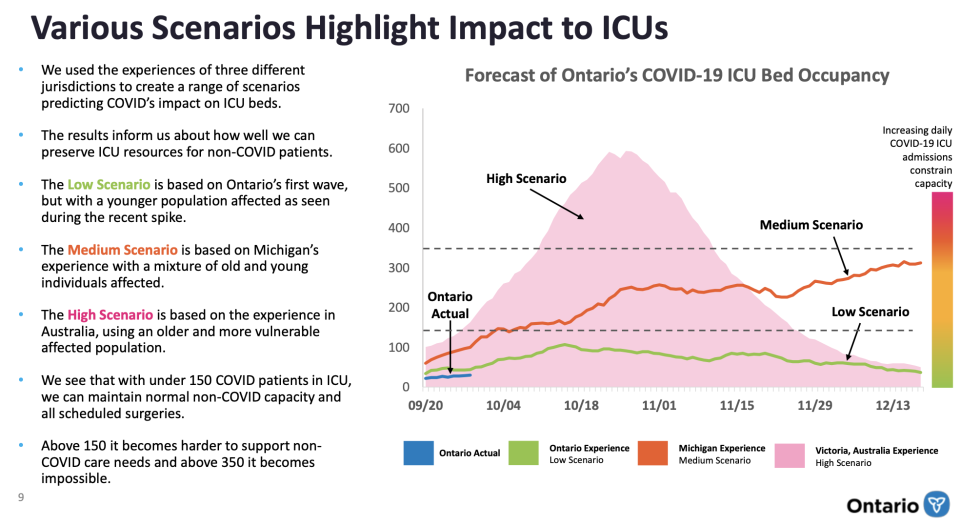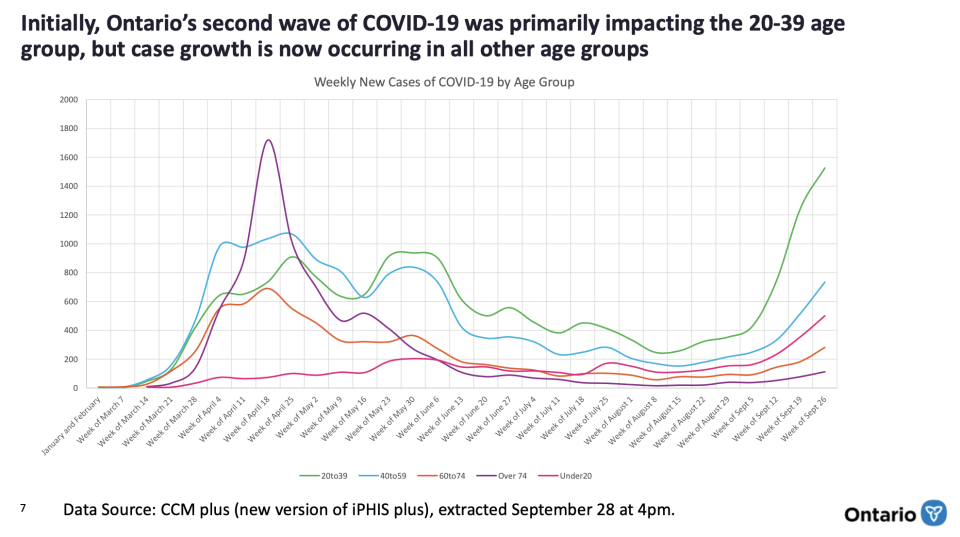COVID-19 in Canada Sept. 30: Quebec introduces $1,000 fines in red zones, Ontario projects 1,000 cases a day in October
Quebec imposes $1,000 fines for people not following rules in red zones
Quebec Premier François Legault announced additional enforcement of the public health rules in place in red zones of the province, Montreal, Quebec City and Chaudière-Appalaches.
“If you’re inviting guests for a party, you’re breaking the law,” Legault said. “When this happens, police officers can give fines of $1,000.”
He went on to say that if someone is not cooperating with police, a warrant can be requested and received in the same night, but also confirmed officers will not be on a “witch hunt” knocking on random doors throughout these regions.
Anyone who is not wearing a mask during a public protest can also receive a $1,000 fine.
“Outside gatherings will also be forbidden,” Legault said. “Police officers will start by trying to disperse the gatherings but if people don’t cooperate they could get tickets.”
The premier confirmed that people who live in red zones cannot go to restaurants in orange zones, but business owners will not be required to verify their address.
“The work of police officers won’t be easy in the weeks to come so I want to thank them for applying the public health rules and mostly, for protecting us,” Legault said. “We cannot accept that a majority of people pay for the negligence of the minority.”
Ontario premier condemns ‘disappointing’ anti-mask group
At a press conference on Wednesday, Ontario Premier Doug Ford was asked by a journalists from the Niagara region to respond to reports of the anti-mask group Hugs over Masks using the premier’s name and phone number to obstruct contact tracing work.
Ford responded by saying this kind of group is “so disappointing” and added that “99 per cent of the population doesn’t believe in what you’re doing.
“Have you ever walked through an ICU unit seeing someone struggling for their life on a ventilator and having their loved ones outside in the hospital, that they can’t even see their loved ones?” Ford said. “Have you ever been to a long-term care facility when people are struggling and the PSWs are out there working their backs off, putting their lives ahead of their own family and putting their community first?”
“You guys want to go out there and act like a bunch of yahoos, that’s being polite... Guys give your heads a shake, we’re all in this together.”
Dr. David Williams, Ontario’s chief medical officer of health, echoed Ford’s disappointment, reinforcing that it is critically important that all Ontarians follow the public health rules in place
“It’s not that complex, you just have to do what you’re supposed to do and do it well,” Dr. Williams said. “Everyone needs to stay focused on the task at hand.”
‘We aren’t rolling back today’
The premier shot down the suggestion that parts of Ontario may move back to Stage 2 or restaurants will be ordered following discussions on Wednesday.
“We aren’t rolling back today,” Ford said. “I’m not saying it’s never going to happen, but today that’s not a conversation that’s going to happen in cabinet.”
Dr. Williams also said provincial health officials are “not planning” on closing any school as was previously done earlier in the year, despite the rising daily case numbers.
Ontario projected to see more than 1,000 cases a day in the the first half of October

New modelling data from the Ontario government is forecasting that the province could soon see more than 1,000 COVID-19 cases a day.
“If things grow as we’re anticipating we will see a dramatic increase in the number of cases, with cases now doubling every 10 to 12 days, and likely over 1,000 cases within the first half of October a day, which is a remarkably high surge,” Adalsteinn Brown, the dean of the Dalla Lana School of Public Health at the University of Toronto said on Wednesday.
Brown stressed that Ontarians are still able to change the trajectory of COVID-19 by adhering to the public health measures.
“There’s the measures and then there’s the adherence to the measures,” he said.
“Every time you see a group of people on the street, standing very close together, walking into a bar without masks on. Every time you see a group of people greeting each other without their masks on and standing much closer than the recommended distance, that’s where this spread starts to happen.”

Ontario’s health experts identified that COVID-19 patients in ICU must remain under 150 to maintain the province’s healthcare system, including the ability to respond to needs like primary care, home care, mental health and addictions services, and scheduled surgeries.
“If we stay below that first line of 150 then our hospitals and in particular ICUs can operate fairly close to normal,” Matthew Anderson, president and CEO of Ontario Health explained.
When the province reached approximately 350 COVID-19 patients in ICU, Anderson said changes will have to be made to other healthcare services, described in the modelling documents as “impossible” to support non-COVID-19 care needs.
Brown stressed that there is a delay in the development of symptoms, from the time of exposure, and there is another delay before symptoms become severe enough to require hospitalization.

The dean of the Dalla Lana School of Public Health at the University of Toronto also indicated that the COVID-19 situation in other jurisdictions provides a “firm foundation” for understanding how the virus will play out in Ontario.
Similar to Australia and Michigan, Ontario is also seeing the overall shape of a first and second wave of COVID-19.

The coronavirus has impacted all age groups and Brown stressed that “young people are able to transmit the disease,” even though the death rate for young people with COVID-19 is relatively low.
“This is where it becomes particularly troublesome or threatening for our health systems as it rises in these older age groups,” he said. “Although we see a large amount of infection among younger people right now, this is likely starting to spill over into older age groups, which is where we see the most tragic and more challenging consequences for health and for the healthcare system.”
Dr. David Williams, Ontario’s chief medical officer of health, pleaded to the public to follow the public health measures in place, confirming provincial health authorities are continually looking at what other recommendations can be made to deal with provincial and regional issues.
“People have to take these recommendations seriously,” Dr. Williams said. “We can make them but if you close down institutions people just go around it, people have to stay to the task.”
“We can bring these measures in, the key is...everybody has to do their part.”
With the latest measures put in place on Sept. 19 and Sept. 25, reducing social gathering limits, shortening operation hours at restaurants and bars, and closing strips clubs, the impacts of those restrictions should be seen in the coming days and weeks.



